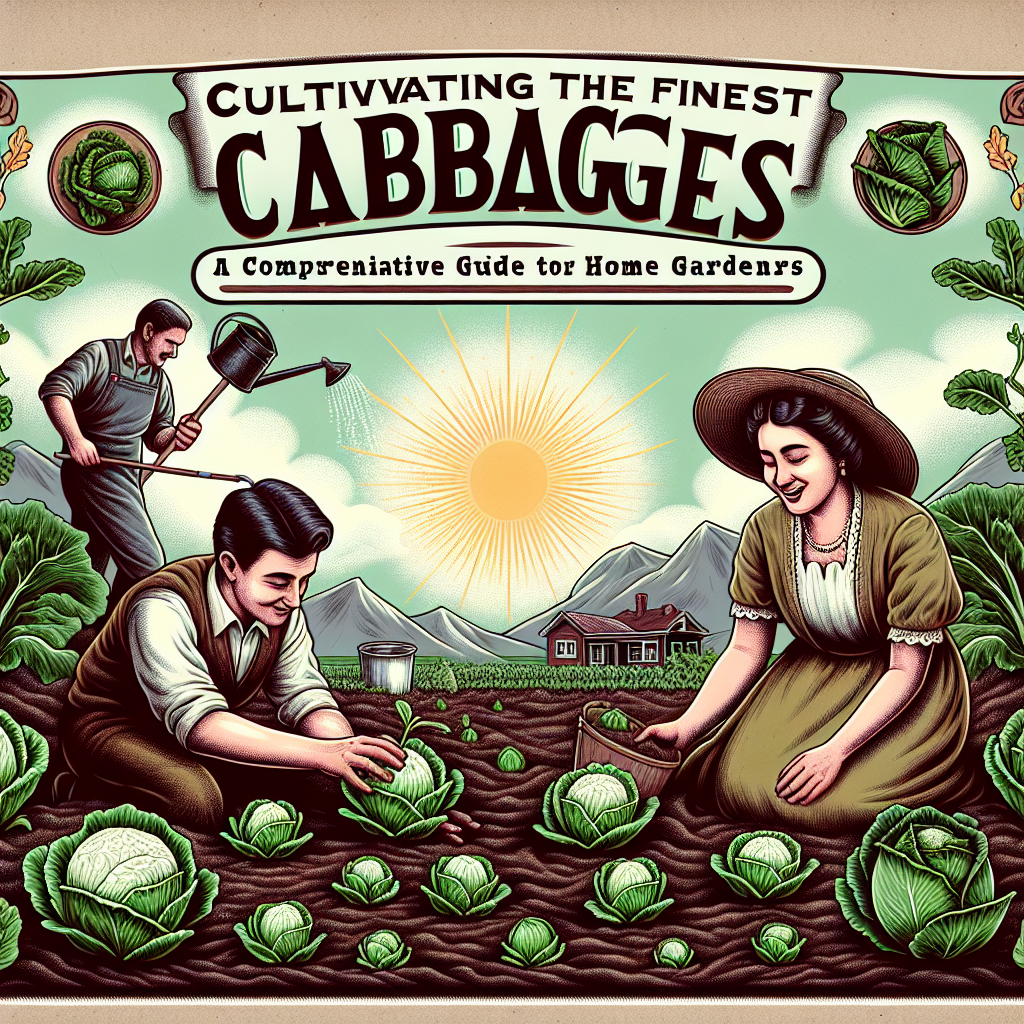Cultivating the Finest Cabbages: A Comprehensive Guide for Home Gardeners
Introduction:
Cabbage is a versatile and nutritious vegetable that can be grown easily in home gardens. Whether you are an experienced gardener or just starting out, this comprehensive guide will provide you with all the information you need to cultivate the finest cabbages in your own backyard. From choosing the right variety to planting, nurturing, and harvesting, we will cover every step of the process to help you achieve bountiful harvests of healthy and delicious cabbages.
Choosing the Right Variety:
There are various cabbage varieties available, each with its unique characteristics and growing requirements. Before starting your cabbage garden, consider factors such as climate, space availability, and personal taste preferences. Common varieties include savoy cabbage (with crinkled leaves), green cabbage (smooth leaves), red cabbage (purple leaves), and Napa cabbage (Chinese variety). Research different types to determine which variety suits your needs best.
Preparing the Soil:
Cabbage plants thrive in well-draining soil that is rich in organic matter. Start by clearing the area of any weeds or debris. Ideally, perform a soil test to assess its pH level and fertility. Cabbage requires slightly acidic soil with a pH range between 6-6.5 for optimal growth. If necessary, amend your soil with compost or organic matter to improve its nutrient content and structure.
Planting Cabbage Seeds/Seedlings:
For early spring harvests, start cabbage seeds indoors about 6-8 weeks before your expected last frost date. Sow seeds in seed trays or pots filled with seed-starting mix. Maintain a warm temperature (around 70°F) and good moisture levels until germination occurs within a week or two.
Once seedlings have developed their second set of true leaves, transplant them into individual containers or outdoor garden beds. Hardening off seedlings is essential before transplantation. Gradually expose them to outdoor conditions, increasing their exposure time to sun and wind over a period of 1-2 weeks.
Alternatively, you can also purchase cabbage seedlings from nurseries or garden centers for direct transplantation into your garden beds. Ensure the seedlings are healthy with sturdy stems and green leaves before purchasing.
Spacing and Planting:

Cabbage plants need adequate space to grow and develop strong root systems. They should be placed at least 18-24 inches apart in rows separated by a distance of 24-36 inches. This spacing allows plants to receive sufficient sunlight, air circulation, and minimizes competition for nutrients.
When transplanting, dig holes that are slightly larger than the root balls of the seedlings. Gently place the seedling into the hole, ensuring it is at the same depth as it was in its previous container. Firmly press the soil around the base of each plant and water thoroughly.
Caring for Cabbage Plants:
Regular watering is crucial for cabbage growth. Keep the soil consistently moist, but not waterlogged, to avoid rotting or diseases caused by excess moisture. Mulching around cabbage plants helps retain soil moisture and suppress weed growth.
Fertilization is essential for optimal growth and development. Apply a balanced organic fertilizer when transplanting seedlings and side dress with compost or well-rotted manure during the growing season.
Pest and Disease Control:
Cabbages can be susceptible to various pests such as aphids, cabbage worms, slugs, and snails. Monitor your plants regularly for signs of pest infestation and take appropriate measures like handpicking or using organic insecticides if necessary.
Diseases like clubroot, blackleg, or powdery mildew can affect cabbage plants too. Practicing crop rotation, ensuring proper spacing between plants for good air circulation, and maintaining adequate soil drainage can help prevent these diseases.
Harvesting Cabbage:
The time it takes for cabbage to mature depends on the variety chosen. Generally, cabbage heads are ready for harvest 70-90 days after transplanting. Look for firm and compact heads with vibrant colors. Use a sharp knife to cut the head off at the base, leaving a few outer leaves intact.
Conclusion:
Cultivating cabbages in your home garden can be a rewarding experience. By selecting the appropriate variety, preparing the soil, and providing proper care and attention, you can harvest an abundance of healthy and tasty cabbage heads. Remember to follow this comprehensive guide and adapt it based on your specific growing conditions to achieve the finest cabbages that will be enjoyed by your family and friends. Happy gardening!













